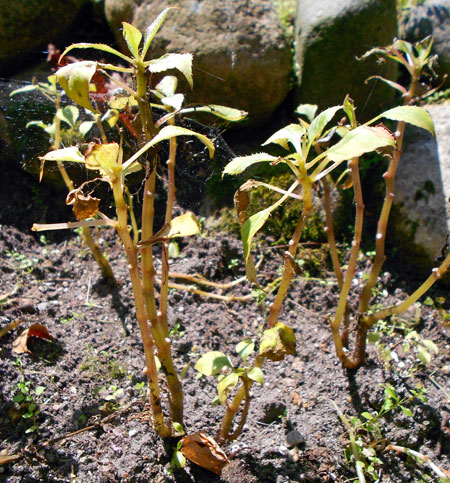Take advantage of recent MSU research and treat impatiens now to prevent downy mildew
Greenhouse growers who grow bedding impatiens or double impatiens from cuttings are reminded to apply recommended fungicides to prevent downy mildew this season. Key changes for the 2014 spray guidelines based on MSU studies are presented.

Greenhouse growers have started seeding impatiens and transplanting them into flats, pots or baskets. Also, double impatiens are being rooted and transferred to their final container. According to Michigan State University Extension, the time is right for growers to protect their impatiens by applying fungicides that target downy mildew.
Recommendations have been developed based on research by MSU Plant Pathologist Mary Hausbeck, and her greenhouse research team. Many greenhouse and landscape studies have been conducted over the past two years. PLEASE NOTE: As a result of 2013 research trials and grower input, the 2014 downy mildew recommendations have been altered from last year.
Below is a conservative example of a fungicide program that has been designed to ensure Michigan’s impatiens are free of downy mildew.
2014 Greenhouse Downy Mildew Fungicide Recommendations
1. First Application
Subdue MAXX (1 fl oz/100 gal) + Alude (12.75 fl oz/100 gal) drench.
Treat soon after plants received unless propagator has treated just before shipment.
2. One week later
Adorn (1 fl oz/100 gal) drench.
3. One week later
A strobilurin (Compass O or Disarm or Fenstop or Heritage or Insignia or Pageant) spray, using high label rate + mancozeb (e.g. Protect DF) as a tank mix.
4. One week later
Segway (2.1 fl oz/100 gal) spray or *Vital (1.25 pt/100 gal)/Alude (12.75 fl oz/100 gal) drench. (*Vital and Alude are labeled for application as a foliar spray for downy mildew and as a drench for Phytophthora/Pythium; MSU studies indicate that only drenches at the high labeled rate are effective for downy mildew control.)
5. One week later
Orvego (11-14 fl oz/100 gal)/Stature SC (6.12 fl oz/100 gal) spray or Micora (4-8 fl oz/100 gal) spray.
6. Repeat # 3, 4, 5 at one-week intervals, as needed. Add mancozeb (Protect, etc.) to any treatment if desired for Alternaria leaf spot control.
Last application, shortly before shipment: Subdue MAXX (1 fl oz/100 gal) + Adorn (1 fl oz/100 gal) drench.
Follow all label instructions and note warnings; local restrictions may apply. Product names are given for information purposes only and are not an endorsement, nor is any criticism implied of products not mentioned.
Key elements of the 2014 suggested impatiens downy mildew fungicide program
For 2014, the first application could be Subdue Maxx alone this year or combined with Alude and applied as a drench. MSU research has indicated that some stunting and flower delay can occur when Adorn is applied to very young impatiens. Adorn could be applied alone at the 1 oz. rate as a second application treatment as noted above.
MSU research conducted during the past two years has shown favorable results when the last fungicide that was applied to impatiens shortly before shipment or sale to the final customer was the Subdue Maxx plus Adorn drench, as noted above. MSU research with impatiens treated with this combination drench just prior to planting in the landscape showed that the impatiens were free of downy mildew for up to 12 weeks.
Growers should treat impatiens plugs or pre-finished material immediately upon receiving it or confirm that they were treated with effective fungicides prior to being shipped to your greenhouse.
If you have further questions, please contact the authors or your local Michigan State University Extension greenhouse educator.

Downy mildew-infected impatiens showing leaf abscission. Photo credit: Mary Hausbeck, MSU



 Print
Print Email
Email


